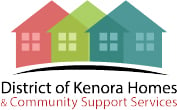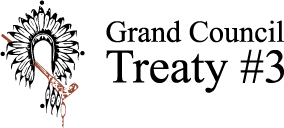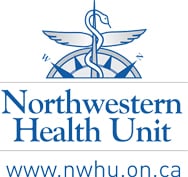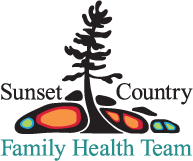Ontario Health Team

Defined patient population
Who is covered, and what does ‘covered’ mean?
Identified population and geography at maturity and target population for year 1. Process in place for building sustained care relationships with patients. High-volume service delivery target for year 1.
Year 1 expectations: Patient access and service delivery target met. Number of patients with sustained care relationship reported. Plan in place for expanding target population.
At maturity: Teams will be responsible for the health outcomes of the population within a geographic area that is defined based on local factors and how patients typically access care.

In-scope services
What is covered?
Existing capacity to deliver coordinated services across at least three sectors of care (especially hospital, home care, community care, and primary care). Plan in place to phase in the full continuum of care and include or expand primary care services.
Year 1 expectations: Additional partners identified for inclusion. Plan in place for expanding range and volume of services provided. Primary care coverage for a significant portion of the population.
At maturity: Teams will provide a full and coordinated continuum of care for all but the most highly-specialized conditions to achieve better patient and population health outcomes.

Patient partnership and community engagement
How are patients engaged?
Demonstrated history of meaningful patient, family and caregiver engagement, and support from First Nations communities where applicable. Plan in place to include patients, families and caregivers in governance structure(s) and put in place patient leadership. Commitment to develop an integrated patient engagement framework and patient relations process. Adherence to the French Language Services Act, as applicable.
Year 1 expectations: Patient declaration of values is in place. Patients, families and caregivers are included in governance structure(s) and patient leadership established. Patient engagement framework, patient relations process, and community engagement plan are in place.
At maturity: Teams will uphold the principles of patient partnership, community engagement, and system co-design. They will meaningfully engage and partner with – and be driven by the needs of – patients, families, caregivers and the communities they service.
→ Aligns with rapid-learning health systems (RLHS) characteristic 1: Engaged patients

Patient care and experience
How are patient experiences and outcomes measured and supported?
Plans in place to improve access, transitions and coordination, key measures of integration, patient self-management and health literacy, and digital access to health information. Existing capacity to coordinate care. Commitment to measure and improve patient experience and to offer 24/7 coordination and navigation services and virtual care.
Year 1 expectations: Care has been redesigned. Access, transitions and coordination, and integration have improved. Zero cold handoffs. 24/7 coordination and navigation services, self-management plans, health literacy supports, and public information about the Team’s services are in place. Expanded virtual-care offerings and availability of digital access to health information.
At maturity: Teams will offer patients, families and caregivers the highest quality care and best experience possible. 24/7 coordination and system navigation services will be available to patients who need them. Patients will be able to access care and their own health information when and where they need it, including digitally, and transitions will be seamless.
→ Aligns with RLHS characteristics 1 (engaged patients) and 2 (digital capture, linkage and timely sharing of relevant data)

Digital health
How are data and digital solutions harnessed?
Demonstrated ability to digitally record and share information with one another and to adopt/provide digital options for decision support, operational insights, population health management, and tracking/reporting key indicators. Single point of contact for digital health activities. Digital health gaps identified and plans in place to address gaps and share information across partners.
Year 1 expectations: Harmonized information- management plan in place. Increased adoption of digital health tools. Plans in place to streamline and integrate point-of-service systems and use data to support patient care and population-health management.
At maturity: Teams will use digital health solutions to support effective healthcare delivery, ongoing quality and performance improvement, and better patient experience.
→ Aligns with RLHS characteristics 2 (digital capture, linkage and timely sharing of relevant data) and 4 (appropriate decision supports)

Leadership, accountability and governance
How are governance and delivery arrangements aligned, and how are providers engaged?
Team members are identified and some can demonstrate history of working together to provide integrated care. Plan in place for physician and clinical engagement and inclusion in leadership and/or governance structure(s). Commitment to the Ontario Health Team vision and goals, developing a strategic plan for the team, reflecting a central brand, and where applicable, putting in place formal agreements between team members.
Year 1 expectations: Agreements with ministry and between team members (where applicable) in place. Existing accountabilities continue to be met. Strategic plan for the team and central brand in place. Physician and clinical engagement plan implemented.
At maturity: Teams will determine their own governance structure(s). Each team will operate through a single clinical and fiscal accountability framework, which will include appropriate financial management and controls.
→ Aligns with RLHS characteristics 5 (aligned governance, financial and delivery arrangements), 6 (culture for rapid learning and improvement), and 7 (competencies for rapid learning and improvement)

Funding and incentive structure
How are financial arrangements aligned?
Demonstrated track record of responsible financial management and understanding of population costs and cost drivers. Commitment to working towards integrated funding envelope, identifying a single fundholder, and reinvesting savings to improve patient care.
Year 1 expectations: Individual funding envelopes remain in place. Single fund holder identified. Improved understanding of cost data.
At maturity: Teams will be prospectively funded through an integrated funding envelope based on the care needs of their attributed patient populations.
→ Aligns with RLHS characteristic 5 (aligned governance, financial and delivery arrangements)

Performance measurement, quality improvement, and continuous learning
How is rapid learning and improvement supported?
Demonstrated understanding of baseline performance on key integration measures and history of quality and performance improvement. Identified opportunities for reducing inappropriate variation and implementing clinical standards and best evidence. Commitment to collect data, pursue joint quality-improvement activities, engage in continuous learning, and champion integrated care.
Year 1 expectations: Integrated quality-improvement plan in place for the following fiscal year. Progress made to reduce variation and implement clinical standards and best evidence. Complete and accurate reporting on required indicators. Participation in central learning collaborative
At maturity: Teams will provide care according to the best available evidence and clinical standards, with an ongoing focus on quality improvement. A standard set of indicators aligned with the quadruple aim will measure performance and evaluate the extent to which Ontario Health Teams are providing integrated care, and performance will be reported.
→ Aligns with RLHS characteristics 2 (digital capture, linkage and timely sharing of relevant data), 3 (timely production of research evidence) and 7 (competencies for rapid learning and improvement)
How the building blocks come together to advance population-health management (PHM)
Components from each of the eight building blocks can be used to support OHTs as they work through the four steps of PHM.
Step 1:
Segmenting for needs, risks and barriers

Step 2:
Co-designing care models and service mix

Step 3:
Implementing and increasing reach

Step 4:
Monitoring and evaluating
















